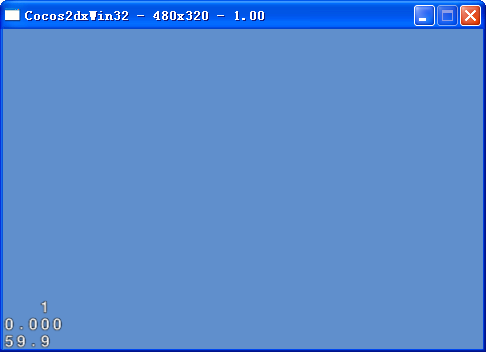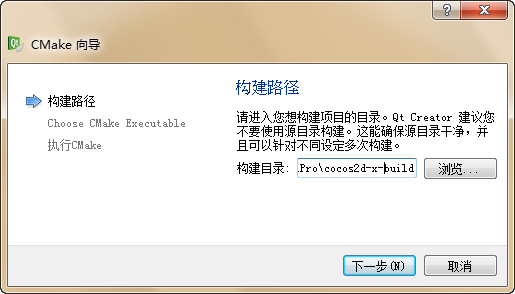最近要学习在quick上用lua编写游戏了,在学习之前,很想知道lua与c++之间的关系,于是找到了tolua++,tolua++是一种第三方的软件包,可以为Lua提供面向对象的特性,这样我们就可以使用Lua来编写使用C++语言库的脚本文件。在cocos中,bindings-generator脚本代替了toLua++。更快的将C++类注册进Lua环境。
首先在quick 3.5下新建一个项目,cd进入工具-bin目录下,输入:cocos new NB -l lua -d ./Projects。这样就新建了项目NB。进入:D:\NB\frameworks\cocos2d-x\tools\tolua 目录你会看见很多ini文件,首先打开README.mdown。这里面有环境的配置,为了方便以后的记忆,我还是写出来了。我是在win7下建的环境。
第一步:确定电脑中有`android-ndk-r9b`.
第二步:Download python2.7.3 (32bit) from (http://www.python.org/ftp/python/2.7.3/python-2.7.3.msi).
第三步:Add the installed path of python (e.g. C:\Python27) to windows environment variable named 'PATH'.
第四步:Download pyyaml from http://pyyaml.org/download/pyyaml/PyYAML-3.10.win32-py2.7.exe and install it.(这个很重要,不然会执行python时报错,什么yaml的错)
第五步:Download pyCheetah from https://raw.github.com/dumganhar/my_old_cocos2d-x_backup/download/downloads/Cheetah.zip,unzip it to "C:\Python27\Lib\site-packages"
第六步:Set environment variables (`NDK_ROOT`)
第七步:run "genbindings.py".
环境配好后,在D:\NB\frameworks\cocos2d-x\tools\tolua 目录下,看见genbindings.py,可以在里面改,也可以重新复制一份出来改。我是复制一份出来改的。
1、先说ini,任意打开一份ini,
[cocos2dx_spine] (ini文件名)
<span style="color: rgb(85,85,85); font-family: 'Microsoft Yahei',sans-serif; font-size: 15px; line-height: 26px; text-indent: 30px;">#prefix会被添加到生成的函数.你也可以选择不添加这个到你的模板</span> prefix = cocos2dx_spine # create a target namespace (in javascript,this would create some code like the equiv. to `ns = ns || {}`) # all classes will be embedded in that namespace (命名空间) target_namespace = sp android_headers = -I%(androidndkdir)s/platforms/android-14/arch-arm/usr/include -I%(androidndkdir)s/sources/cxx-stl/gnu-libstdc++/4.7/libs/armeabi-v7a/include -I%(androidndkdir)s/sources/cxx-stl/gnu-libstdc++/4.7/include -I%(androidndkdir)s/sources/cxx-stl/gnu-libstdc++/4.8/libs/armeabi-v7a/include -I%(androidndkdir)s/sources/cxx-stl/gnu-libstdc++/4.8/include android_flags = -D_SIZE_T_DEFINED_ clang_headers = -I%(clangllvmdir)s/lib/clang/3.3/include clang_flags = -nostdinc -x c++ -std=c++11 -U __SSE__ cocos_headers = -I%(cocosdir)s/cocos -I%(cocosdir)s/cocos/editor-support -I%(cocosdir)s/cocos/platform/android cocos_flags = -DANDROID cxxgenerator_headers = # extra arguments for clang extra_arguments = %(android_headers)s %(clang_headers)s %(cxxgenerator_headers)s %(cocos_headers)s %(android_flags)s %(clang_flags)s %(cocos_flags)s %(extra_flags)s # what headers to parse (类所在路劲) headers = %(cocosdir)s/cocos/editor-support/spine/spine-cocos2dx.h # what classes to produce code for. You can use regular expressions here. When testing the regular # expression,it will be enclosed in "^$",like this: "^Menu*$". classes = SkeletonRenderer SkeletonAnimation (需要注册的类,有多个需要用空格空开) # what should we skip? in the format ClassName::[function function] # ClassName is a regular expression,but will be used like this: "^ClassName$" functions are also # regular expressions,they will not be surrounded by "^$". If you want to skip a whole class,just # add a single "*" as functions. See bellow for several examples. A special class name is "*",which # will apply to all class names. This is a convenience wildcard to be able to skip similar named # functions from all classes. (在lua中不能访问的函数名,没有,=后面就不写) skip = SkeletonRenderer::[findBone findSlot getAttachment setAttachment update draw createWithData],*::[update draw drawSkeleton],SkeletonAnimation::[setAnimationStateData createWithData addAnimation getCurrent setAnimation onAnimationStateEvent onTrackEntryEvent getState createWithFile] (下面全空的默认OK) rename_functions = rename_classes = # for all class names,should we remove something when registering in the target VM? remove_prefix = # classes for which there will be no "parent" lookup classes_have_no_parents = # base classes which will be skipped when their sub-classes found them. base_classes_to_skip = # classes that create no constructor # Set is special and we will use a hand-written constructor abstract_classes = Skeleton SkeletonAnimation # Determining whether to use script object(js object) to control the lifecycle of native(cpp) object or the other way around. Supported values are 'yes' or 'no'. script_control_cpp = no
2、在D:\NB\frameworks\runtime-src\Classes目录下编写自己的类,也可以在其他目录下。
(这个是引用:http://segmentfault.com/a/1190000000631630)
MyClass.h
#pragma once
#include "cocos2d.h"
using namespace cocos2d;
class MyClass : public Ref
{
public:
MyClass() {};
~MyClass() {};
bool init() { return true; };
CREATE_FUNC(MyClass);
int foo(int i);
};MyClass.cpp
#include "MyClass.h"
int MyClass::foo(int i)
{
return i + 100;
}
3、MyClass.ini
[MyClass] (改) prefix = MyClass (改) target_namespace = my (改) android_headers = -I%(androidndkdir)s/platforms/android-14/arch-arm/usr/include -I%(androidndkdir)s/sources/cxx-stl/gnu-libstdc++/4.7/libs/armeabi-v7a/include -I%(androidndkdir)s/sources/cxx-stl/gnu-libstdc++/4.7/include -I%(androidndkdir)s/sources/cxx-stl/gnu-libstdc++/4.8/libs/armeabi-v7a/include -I%(androidndkdir)s/sources/cxx-stl/gnu-libstdc++/4.8/include android_flags = -D_SIZE_T_DEFINED_ clang_headers = -I%(clangllvmdir)s/lib/clang/3.3/include clang_flags = -nostdinc -x c++ -std=c++11 -U __SSE__ cocos_headers = -I%(cocosdir)s/cocos -I%(cocosdir)s/cocos/editor-support -I%(cocosdir)s/cocos/platform/android cocos_flags = -DANDROID cxxgenerator_headers = extra_arguments = %(android_headers)s %(clang_headers)s %(cxxgenerator_headers)s %(cocos_headers)s %(android_flags)s %(clang_flags)s %(cocos_flags)s %(extra_flags)s headers = %(cocosdir)s/../runtime-src/Classes/MyClass.h (改,这是自己类路劲,可以自己改) classes = MyClass (改) skip = (改) rename_functions = rename_classes = remove_prefix = classes_have_no_parents = base_classes_to_skip = Ref ProcessBase abstract_classes = script_control_cpp = no4、复制一份genbindings.py为genbindings_MyClass。类容如下:
output_dir = '%s/cocos/scripting/lua-bindings/auto' % project_root (这个路径是生成lua_MyClass_auto 的路径,可以自己改)
cmd_args = { 'MyClass.ini' : ('MyClass','lua_MyClass_auto')} 只生成MyClass的注册类。
5、在D:\NB\frameworks\cocos2d-x\tools\tolua目录下,执行python genbindings_myclass.py。没问题的话,你会在output_dir的路径下看见
lua_MyClass_auto.cpp 和 lua_MyClass_auto.hpp 两个文件。
在D:\NB\frameworks\cocos2d-x\cocos\scripting\lua-bindings\auto\api目录下看见MyClass.lua
6、在D:\NB\frameworks\runtime-src\Classes\AppDelegate.cpp中加入:#include "lua_MyClass_auto.hpp"
在LuaEngine* engine = LuaEngine::getInstance();后面加入:register_all_myclass(engine->getLuaStack()->getLuaState());
7、编译运行,这样,MyClass这个类就被导出到lua了
8、在main.lua中尝试:
local test = my.MyClass:create()
print("lua bind: " .. test:foo(99))
(仅个人理解,如有不对,还请指正)
参考链接:http://www.cocoachina.com/bbs/read.PHP?tid-196416.html
http://segmentfault.com/a/1190000000631630
版权声明:本文内容由互联网用户自发贡献,该文观点与技术仅代表作者本人。本站仅提供信息存储空间服务,不拥有所有权,不承担相关法律责任。如发现本站有涉嫌侵权/违法违规的内容, 请发送邮件至 dio@foxmail.com 举报,一经查实,本站将立刻删除。









